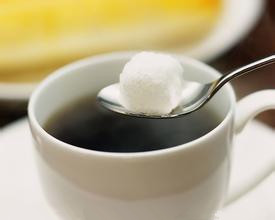Ethiopia sues for Coffee
Ethiopia strongly mediated Brazil, the world's largest coffee producer, to share the research results of natural decaf coffee trees, and then fought Starbucks, the world's largest coffee chain brand, for the rights and interests of coffee farmers, accusing Green Mermaid of stealing the three coffee origin names of Yejia Shefi, Sidamo and Harar, which were originally owned by Ethiopia, and demanding that Starbucks must cancel the Trademark Registering of these three place names, because these place names belong to Egypt and must be used only with the consent and authorization of the countries concerned.

The dispute broke out in March 2005 and became the focus of international media speculation.
The media is interested in Ethiopia, the birthplace of Arabica. In 2006, the export volume of coffee reached 170,000 tons, earning 431 million US dollars, accounting for 35% of the national export volume. 15 million people out of 70 million people depend on coffee for their livelihood. In 2006, Egypt's GDP was only 9.78 billion US dollars, and its national income was less than 900 US dollars, making it one of the poorest countries in the world.
Starbucks, on the other hand, is a coffee chain giant with 12,440 stores worldwide in 2016. Its powerful legal team is best at suing its peers for counterfeiting the Green Mermaid trademark. Its total turnover is 7.78 billion US dollars, almost 80% of Ethiopia's GDP. In 2006, Starbucks imported 150,000 tons of coffee beans from various producing countries in the world, accounting for about 50% of Ethiopia's coffee production in the same year, but Ethiopian coffee accounted for only 2% of Starbucks 'coffee imports in 2006 (Starbucks mainly focuses on Central and South American beans, which is in line with the historical trajectory of American coffee preference). In the past, only Starbucks told people, but now Ethiopia, which is poor, is treating itself in its own way. It does not hesitate to fight a hard battle with Starbucks, which is rich enough to rival the enemy. Of course, it is wonderful.
Important Notice :
前街咖啡 FrontStreet Coffee has moved to new addredd:
FrontStreet Coffee Address: 315,Donghua East Road,GuangZhou
Tel:020 38364473
- Prev

Ethiopia builds "Rainbow House" in memory of Rambo
Rambo made a small fortune with Harald Coffee, while Harald became famous for Rambo's stop, but does he really like Harald Coffee? I'm afraid coffee fans are disappointed. According to his letters to friends, he once described Harald coffee as a horrible, abominable, disgusting stink! But it would be arbitrary to assert that Rambo doesn't like Harald coffee, because he may be describing farmers.
- Next

The emergence of coffee demand in Europe began in the 17th century
In the 17th century, there was a demand for coffee in Europe and began to import small quantities of roasted coffee beans from Yemen. In the 18th century, with the fragrance of European cafes and the sharp increase in coffee bean consumption, the Yemeni mocha alone was no longer enough. It is estimated that the output of coffee beans in Yemen in 2007 ○○ is about 20, 000 tons, which is stretched to meet the rising demand of Europe. The price of beans is high and the port of Mocha is busy.
Related
- How did the Salvadoran coffee industry develop in Central America?
- What exactly does the golden cup extraction of coffee mean?
- The Origin of Coffee flower
- [2023 Starbucks World Earth Day] there are more meaningful things besides free Starbucks coffee!
- What kind of coffee is there in Spain? 9 Flavors of Spanish Coffee
- Aromatic African coffee| Kenya's coffee culture and historical production area
- Liberica Coffee Bean knowledge: the characteristics of Liberian Coffee beans of the three original species of Coffee beans
- The origin and formula of Spanish latte introduces the taste characteristics of Bombon coffee in Valencia, Spain.
- How to adjust the solution of over-extracted coffee
- What is the tasting period of coffee beans? What is the period of coffee and beans? How should coffee wake up and raise beans?

